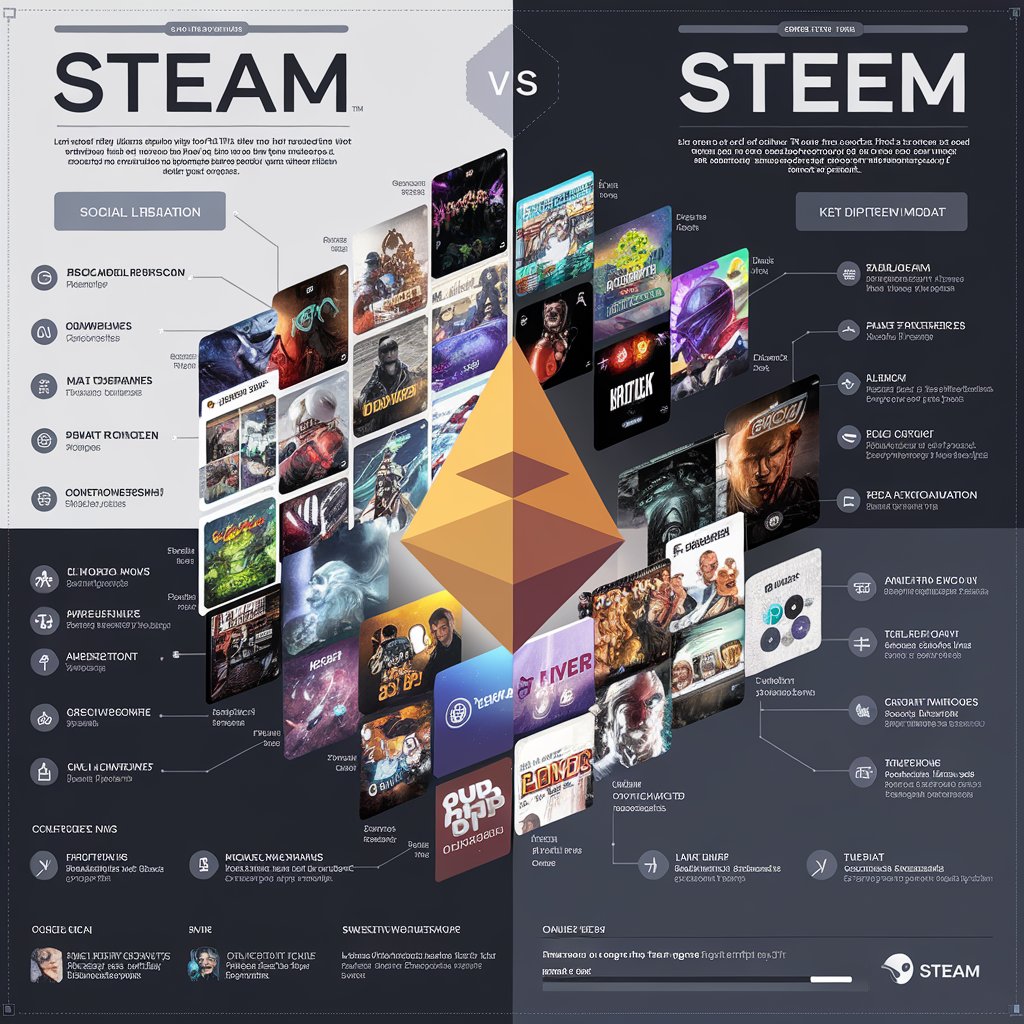Introduction
The words Steam and Steem might sound similar, but they refer to entirely different concepts with distinct uses in the real world. While one belongs to the realm of physical science and gaming, the other has carved its niche in blockchain and cryptocurrency. This article dives into the key differences, practical applications, and everyday usage of these terms, so you’ll never confuse them again.
What Are Steam and Steem? A Quick Overview
At their core, Steam and Steem represent two entirely unrelated ideas:
- Steam refers to water vapor, a vital physical phenomenon, as well as a popular digital platform for gamers.
- Steem is a blockchain-based cryptocurrency designed for rewarding content creators and powering decentralized applications.
The similarity in pronunciation leads to confusion, but understanding their unique contexts will help clarify their differences.
Read More About This Article: Among or Amongst: Which Should You Use and When?
Understanding Steam and Steem in Depth
Steam: Definition and Common Uses
Steam Definition: Steam is the gaseous phase of water created when water is heated above its boiling point. This simple concept has countless practical applications, from cooking to industrial processes.
Applications of Steam:
- Steam in Industrial Processes
- Steam has been a cornerstone of industrial power since the Industrial Revolution.
- It’s used in power plants to drive turbines for electricity generation.
- Manufacturing facilities rely on steam heating systems to process materials.
- Cooking With Steam
- Steamed vegetables retain more nutrients compared to boiling or frying.
- Culinary traditions, such as dim sum, showcase the versatility of steam in cooking.
- Modern steam ovens offer precise cooking methods for various dishes.
- Steam as a Digital Platform
- Steam, developed by Valve Corporation, is a global digital platform for purchasing, downloading, and playing video games.
- Features include:
- A vast library of games.
- Community-based initiatives, such as user reviews and mods.
- Achievements and cloud storage for game saves.
Steem: Definition and Unique Applications
Steem Definition: Steem is a blockchain-based cryptocurrency powering platforms like Steemit, where users earn rewards for content creation and engagement.
Key Features of Steem:
- Cryptocurrency Transactions
- Steem enables fast and fee-free transactions, ideal for rewarding users in a decentralized ecosystem.
- Blockchain and Decentralized Applications (dApps)
- Steem supports dApps that prioritize user engagement, such as Steemit and other social platforms.
- Content Monetization
- Unlike traditional platforms where revenue flows to corporations, Steem rewards content creators directly.
- Users can accumulate Steem by contributing valuable content and participating in the community.
Key Differences Between Steam and Steem
The table below highlights their primary distinctions:
| Aspect | Steam | Steem |
|---|---|---|
| Definition | Water vapor / Gaming platform | Blockchain-based cryptocurrency |
| Usage Context | Physical science, cooking, gaming | Decentralized finance, content monetization |
| Key Feature | Power generation / Video game distribution | Rewards system for content creators |
| Community Involvement | Online gaming community | Blockchain community initiatives |
| Monetization Model | Game purchases and in-app transactions | Earning cryptocurrency through content |
Practical Examples of Everyday Usage
When to Use “Steam”
- In Cooking:
- “Steam the vegetables to preserve their nutrients.”
- Popular dishes like steamed fish or bao buns rely on this method.
- In Industry:
- “Power plants use steam to drive turbines and generate electricity.”
- In Gaming:
- “I purchased a new game on Steam yesterday.”
When to Use “Steem”
- In Cryptocurrency Transactions:
- “Steem enables users to earn rewards for their posts on the Steemit platform.”
- In Blockchain Communities:
- “Active contributors in the Steem community are rewarded with Steem tokens.”
Steam and Steem in Modern Culture
Steam has become synonymous with gaming culture, acting as a hub for millions of gamers worldwide. Its platform has expanded to include features like virtual reality and indie game development.
Steem, on the other hand, represents the growing importance of blockchain in digital communities. By empowering users through decentralized content rewards, Steem is reshaping how creators earn online.
FAQs: Common Misunderstandings About Steam and Steem
Is Steem related to Steam?
No, Steam and Steem are entirely unrelated. Steam is either water vapor or a gaming platform, while Steem is a cryptocurrency.
Can you use Steem for gaming?
Not directly. Steem is primarily used for blockchain-based social media and content platforms.
Are Steam achievements the same as Steem tokens?
No, Steam achievements are digital rewards for completing tasks in games, whereas Steem tokens have real-world monetary value.
Conclusion
Steam and Steem serve vastly different purposes. Steam revolves around water vapor, industrial applications, and gaming, while Steem powers a blockchain ecosystem focused on decentralization and content rewards. Understanding their unique contexts ensures you use the right term in the right situation. Whether you’re steaming vegetables or earning cryptocurrency, knowing the difference is essential.
